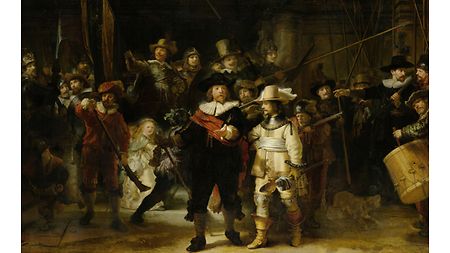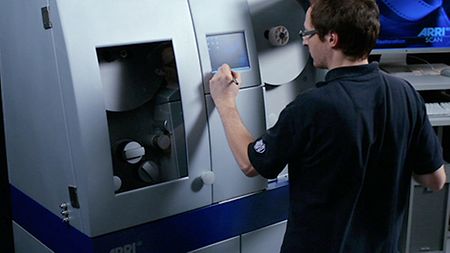There are several key concepts in ACES (and modern color management in general) that were novel to cinema professionals when they were first introduced in the late 2000s. They remain key in understanding ACES, so we review them here, and then use them frequently in the other tabs of these ACES pages.
Image state is a property of an image that describes whether its primary purpose is the representation of the scene being captured, or the depiction of the scene to some viewer. In a way, it describes the purpose of the image.
Scene colorimetry describes the luminances and hues of the real-world or synthetic objects that were photographed with a real or virtual camera. Display colorimetry describes the luminances and hues produced by the device that presents the reproduction of that scene to the viewer.
It may help to think of traditional photochemical filmmaking for a moment. The scene might be the set as lit by a cinematographer. The colors present on that set to a human observer are the scene colorimetry. The image state of the developed negative is (loosely speaking) said to be scene-referred. The image state of the film print is said to be display-referred or output-referred, and the image as it appears on the theater screen is presenting display colorimetry to the moviegoer.
In ACES there is considerable emphasis on assuring that the scene-referred image is as colorimetrically accurate as possible. If this were always done perfectly, then the ACES scene-referred images of a scene captured simultaneously by ARRI, SONY and Canon cameras would be identical. In practice, the images are not identical due to differences in dynamic range, in noise, and in the fine points of sensor design. That said, for that very large number of users who have tried to match the output of multiple types of cameras without having tools or theory to help them, ACES is something of a revelation — ACES brings such disparately-sourced images “within range” of each other, quickly, easily and consistently.
When the brightness of a display-referred image is much less than the brightness of the scene-referred image (think of the bright light on-set for beach scenes in a surfing movie, and then the relatively dim light of that movie when projected), just scaling the brightness of the colors doesn’t produce a very appealing image. To make the displayed image compelling, a rendering transform is used to convert scene colorimetry to display colorimetry.
This idea of rendering probably predates ACES by about five centuries; you can see a non-realistic but visually pleasing darkening of shadows and increase of highlight in Rembrandt’s The Night Watch (to take just one example).

